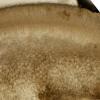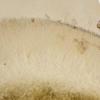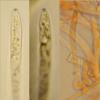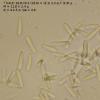
04-11-2025 09:07
Hello.A suspected Hymenoscyphus sprouting on a thi

04-11-2025 12:43
 Edvin Johannesen
Edvin Johannesen
Hi! One more found on old Populus tremula log in O

03-11-2025 21:34
 Edvin Johannesen
Edvin Johannesen
These tiny (0.4-0.5 mm diam.), whitish, short-stip

28-10-2025 15:37
Carl FarmerI'd be grateful for any suggestions for this strik

03-11-2025 16:30
 Hans-Otto Baral
Hans-Otto Baral
Hello I want to ask you if you have found this ye

28-10-2025 19:33
 Nicolas Suberbielle
Nicolas Suberbielle
Bonjour à tous,Je voudrais votre avis sur cette r
Mollisia cf rivularis
Viktorie Halasu,
22-06-2017 18:45
 Hello,
Hello, there's another Mollisia from the same stream, close to M. rivularis, but without LBs.
On water-soaked wood in a brook between spruce and beech forests, 620 m a.s.l. Apothecia cca 2 mm in diam., solitary or in groups.
Spores sometimes heteropolar, OCI=0.
Asci IKI+ bb, croziers+
Marginal cells short, brownish.
Medullary exc. = t. intricata, running mostly parallel to the surface, hyaline, no crystals.
Ectal exc. = t. angularis turned 90° to the surface, brown cell walls.
KOH negative
I couldn't get a good look on the paraphyses, I just assume that there are those long VBs.
Should I name it "cf rivularis", or is there a better name for this collection?
Thank you for any advice.
Viktorie
Hans-Otto Baral,
22-06-2017 20:28

Re : Mollisia cf rivularis
I do not know well M. rivularis but the fungus by Joaquin seems to be similar.
Viktorie Halasu,
22-06-2017 21:34

Re : Mollisia cf rivularis
Andreas wrote somewhere here that rivularis should have OCI=1. Also Piotr Perz's collection in the database here has some small LBs. Also the spores of my collection are longer, there's only * 9-12(13) um in the key.
Andreas wrote here that there are some intermediate collections between rivularis and uda/pulviniformis, so I wasn't sure if this is not one of them too.
Andreas wrote here that there are some intermediate collections between rivularis and uda/pulviniformis, so I wasn't sure if this is not one of them too.
Hans-Otto Baral,
22-06-2017 22:17

Re : Mollisia cf rivularis
In any case interesting. I fear with Mollisia one has to do molecular work together with detailed morphology.





